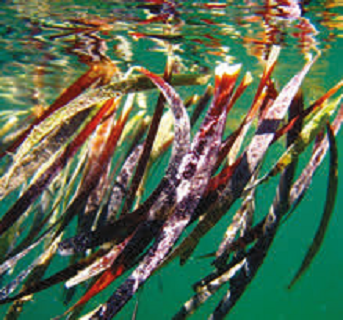Dugong
Dugong
Dugong dugon
Description
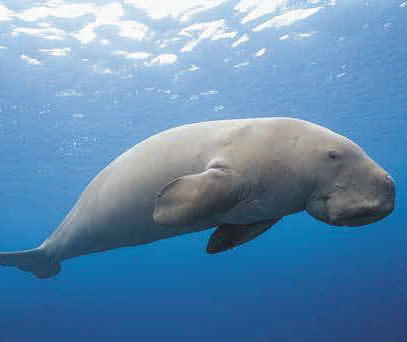
| Length 3m |
Weight 450 kg |
Lifespan 70 years |
Resembling an overweight dolphin and referred to as a sea cow, the dugong is actually more closely related to the elephant. The dugong’s elongated snout faces downwards and its enormous, bristly upper lip is mobile. A heavy skeleton helps it stay down while feeding. The dugong has an extraordinarily long intestine—up to 30 metres — because its seagrass diet is hard to digest.
Diet and habitat
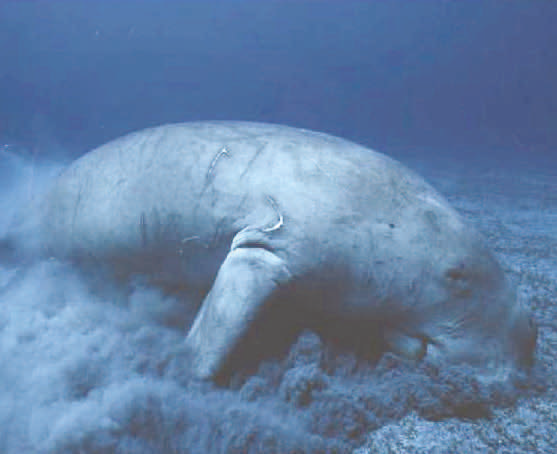
Dugongs feed almost exclusively on seagrass and eat up to 50kg per day. While dugongs are the world’s only herbivorous marine mammal, they occasionally eat molluscs and crustaceans. They live in warm, shallow waters with extensive seagrass meadows like those of Shark Bay .
Breeding
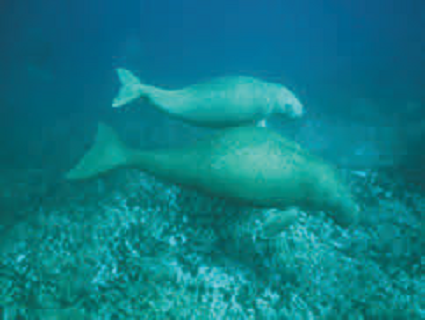
| Gestation 14 months |
No. young 1 |
Weaned 18 months |
Females calve from 12–17 years of age. A female may have one calf every three to seven years. Newborn calves are pale brown, just over a metre long, and weigh up to 35kg. Calves can swim as soon as they are born and may stay with their mothers for two years or more. They swim just above her back and communicate with chirps, squeaks and trills.
Distribution
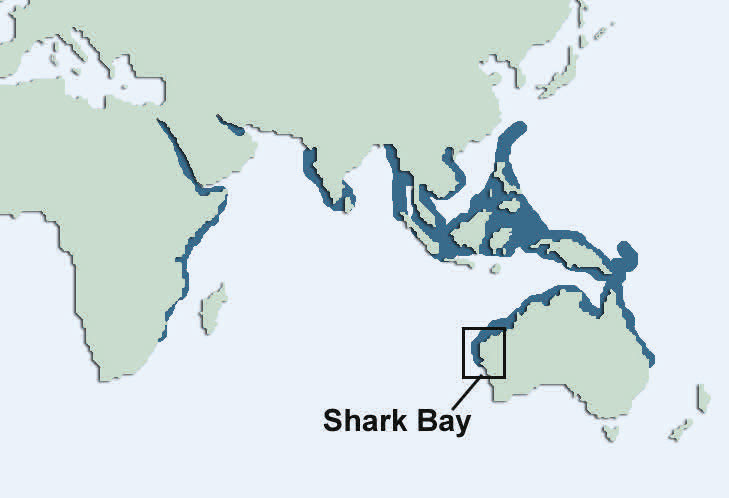
Dugongs are found between 26º north and south of the Equator. The 10,000 or more dugongs in Shark Bay make up about 10% of the world’s dugong population and they breed in the eastern part of Shark Bay.
Status

Dugongs are considered globally vulnerable to extinction. Greatest threats are loss of seagrass beds due to climate change, development and pollution.
Fact sheet
SHARK BAY
World Heritage

